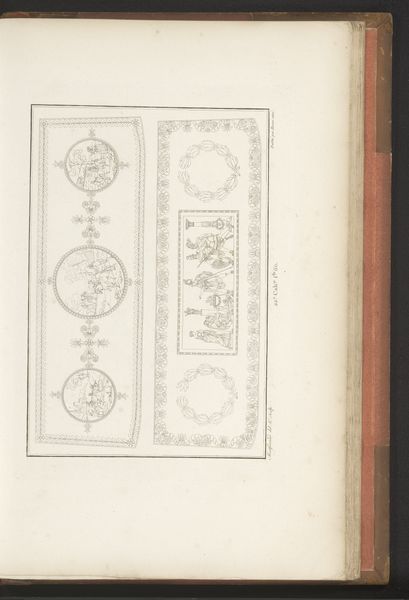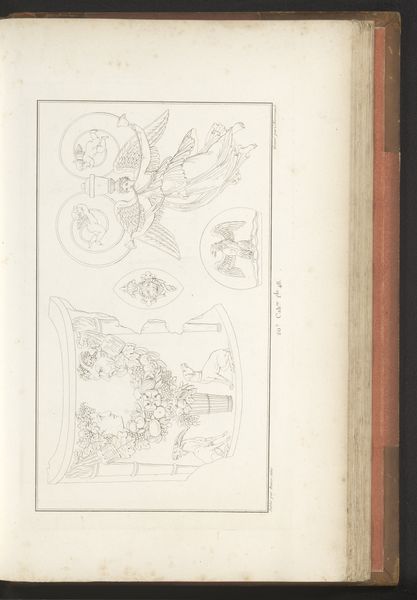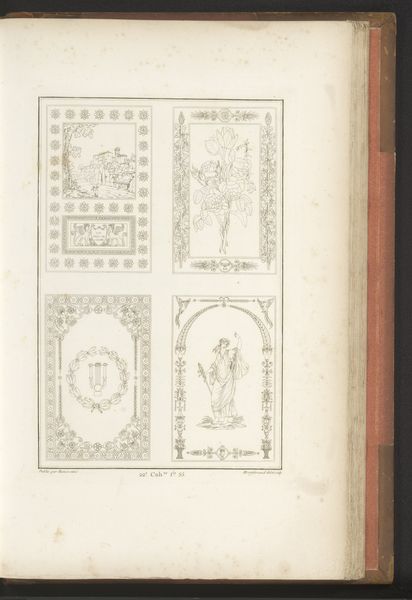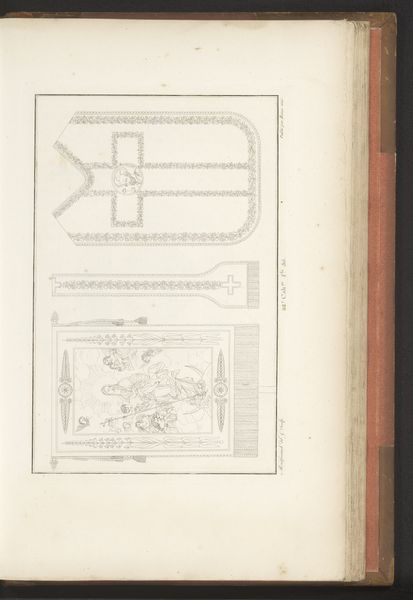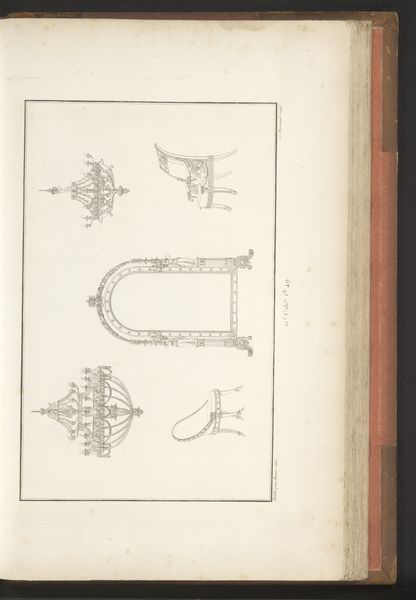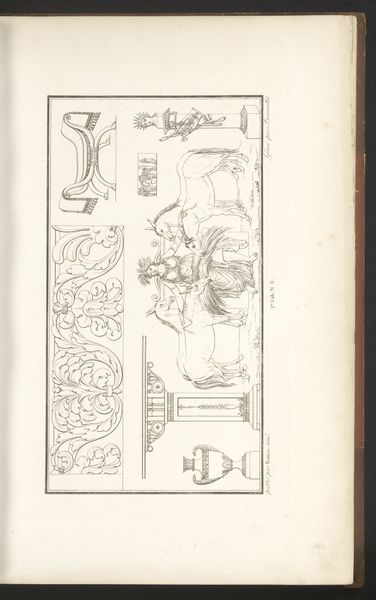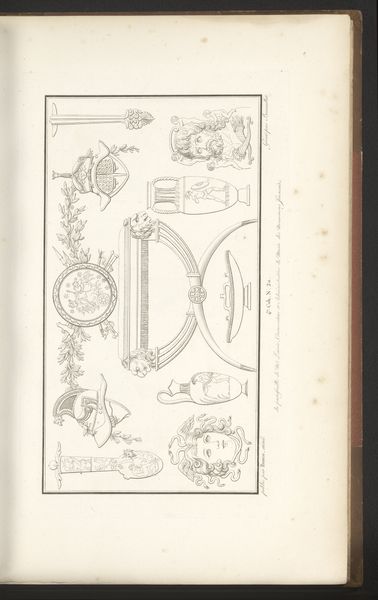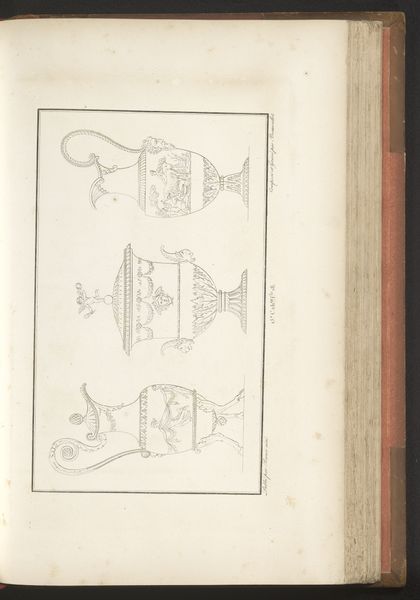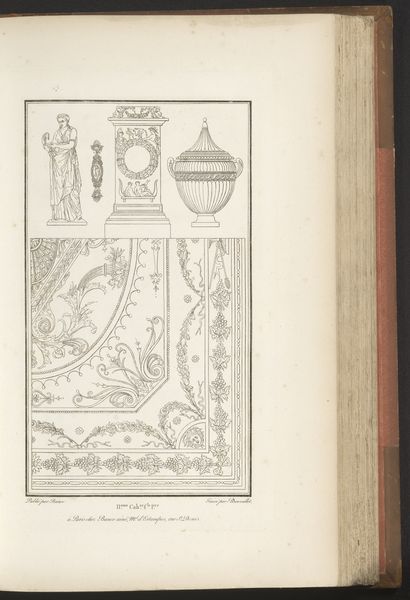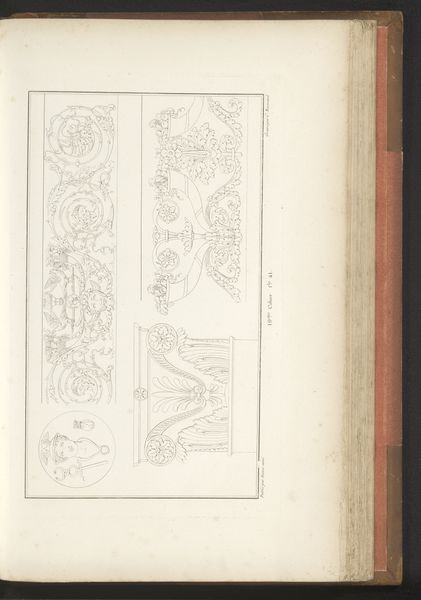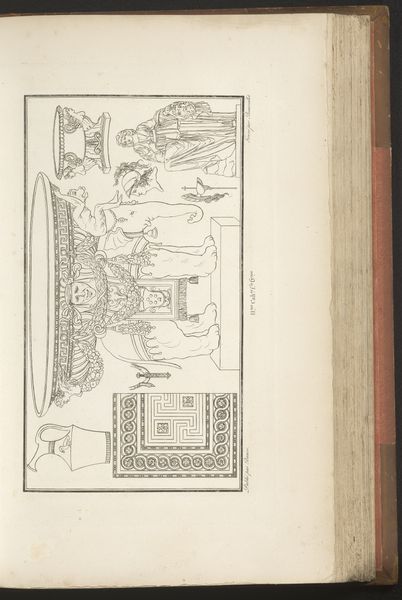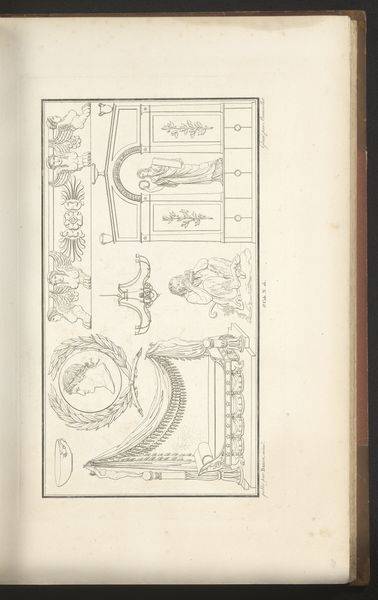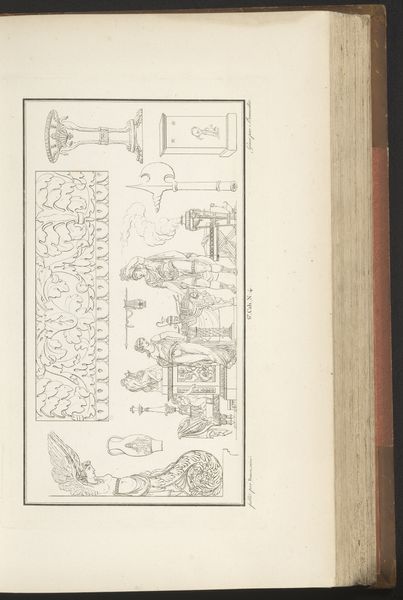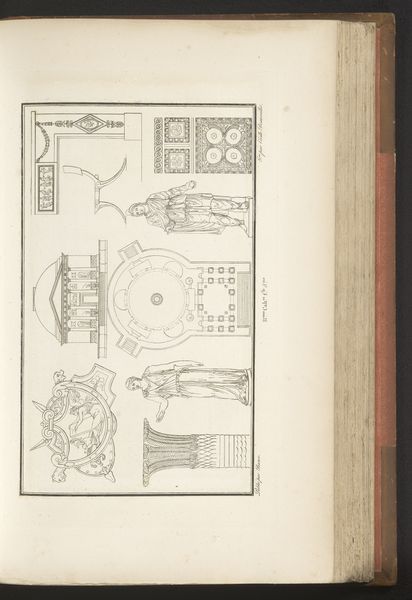
drawing, paper, ink, pen
#
drawing
#
neoclacissism
#
aged paper
#
toned paper
#
ink paper printed
#
sketch book
#
hand drawn type
#
landscape
#
paper
#
personal sketchbook
#
ink
#
pen-ink sketch
#
pen work
#
sketchbook drawing
#
pen
#
cityscape
#
sketchbook art
Dimensions: height mm, width mm
Copyright: Rijks Museum: Open Domain
Curator: We’re looking at a page from a sketchbook by Auguste Ricard de Montferrand. This ink drawing on paper, titled "Twee kleden," dates back to 1820 and seems to showcase two distinct design concepts. What are your initial thoughts? Editor: The immediate feeling is one of delicate formality. The muted tones of the paper contrast with the precision of the ink work. There's a distinct compartmentalization happening; it feels almost like looking at two separate studies on the same plane. Curator: Indeed. Notice how each "carpet" or "fabric" displays meticulously rendered details within decorative borders. The drawing to the left offers ornamental floral arrangements with, perhaps, the figure of a woman; to the right, a panoramic view of a cityscape unfolds, dominated by classical architectural elements. Editor: Absolutely. The interplay between these bordered vignettes is fascinating. It highlights the Neoclassical aesthetic with the clear linear forms and balanced composition. The architecture is strikingly geometric, serving as a rigid counterpoint to the more organic botanical elements on the left. Curator: Beyond pure aesthetic preference, these architectural renderings probably functioned as design prototypes, reflecting Montferrand's career as an architect, primarily working in Russia at the time. What this sketch might communicate in a more historical sense is the emerging importance of architecture for civic grandeur. Editor: Yes, the urban landscape captures a societal ambition—order and clarity through architectural precision. But the borders are so incredibly ornate! Don't you think it serves to emphasize the idea of the artificial, as it attempts to enclose these worlds in the borders of the sketchbook itself? Curator: That is precisely the dialectic driving so many Neoclassical expressions; it speaks to an artistic control over natural expression. And by bringing a similar approach to architectural design, such pieces allowed a projection of order and a celebration of artistic ingenuity into the public sphere. Editor: Ultimately, a sketchbook page allows a peek into an artist's world and their thought process, from initial concepts to resolved design ideas, revealing those core underpinnings of what later turns into architecture. Curator: It certainly invites us to imagine the grander scale of Montferrand's designs, framed by a historical period obsessed with structure.
Comments
No comments
Be the first to comment and join the conversation on the ultimate creative platform.
